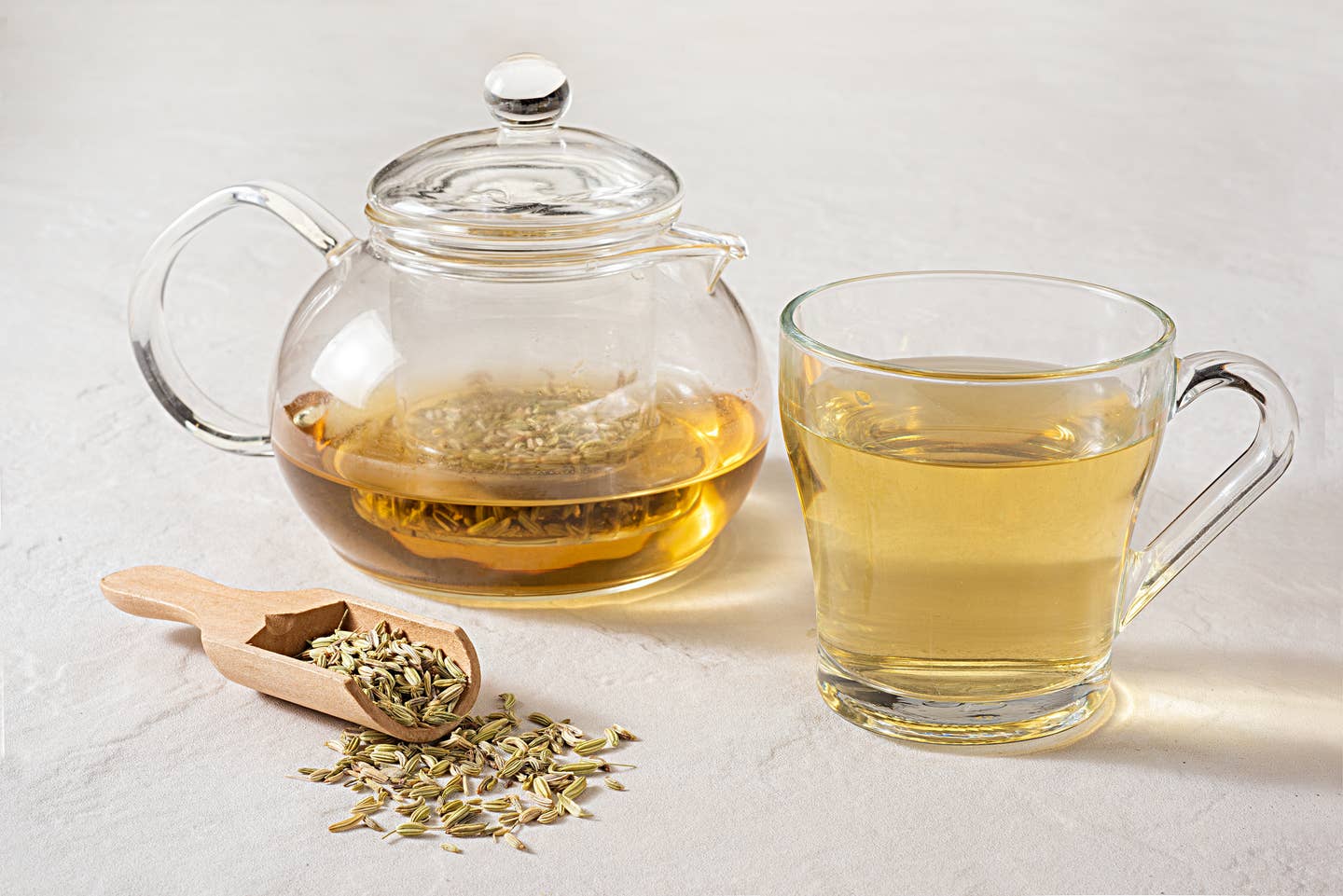
How to Use Breathing Exercises to Help You Lose Weight and Stay Calm
Losing weight is as easy as... breathing? Yes, it's true, though you have to commit to the type of breathing exercise that works to calm the sympathetic nervous system, lower the stress hormone cortisol, and help the body shed fat. Studies have shown breathing exercises work to promote weight loss and help you feel calm and energized. So if you want to trade in your morning workout for breathing, or better yet, add on ten minutes of breathing a day, there is plenty of scientific evidence that reveals breathing can be an effective weight-loss tool.
Breathing lowers cortisol which helps the body lose weight or burn fat
Deep breathing exercises lowers cortisol, the stress hormone in the body, which in turn can help you lose weight. Cortisol is a "fight or flight" response to a stressor and tells the sympathetic nervous system to hold onto fat (for the battle or the journey) so when cortisol goes up, you hold onto calories and when it goes down, your body lets go, allowing you to burn fuel to support your activity. Studies have shown a connection between cortisol levels in the body and obesity, metabolic syndrome, and weight gain. Breathing exercises have been proven to help lower cortisol.
In one study, called "The role of deep breathing on stress," 38 university students aged 18 to 28 were divided into two groups, to see if breathing intervention helps improve mood and reduce stress. One group practiced deep breathing exercises, for a total of 10 treatments, while the others just sat in a quiet room without doing the breathing exercises. Among those who learned and practiced the breathing exercises, their biological profile of stress had improved as measured by heart rate and salivary cortisol levels which both went down.
Breathing brings oxygen to cells and releases CO2, the "exhaust" of fat burning
Deep breathing increases the supply of oxygen in your body and this extra oxygen helps you burn extra fat, according to a study. Breathing deeply also helps to improve blood circulation and allows the body to exhale CO2, or the output when you break apart carbon for fuel, which is essentially how fat gets burned. Think of it as the exhaust fumes from your engine.
Belly breathing can even help the process, according to experts, who recommend trying different types of breathing exercises to see which one works for you.
Researchers at the University of New South Wales in Australia reported in a paper that
"when weight is lost, the majority of it is breathed out as carbon dioxide," which was news to many people who believed that fat gets lost through energy or heat, according to Andrew Brown and Ruben Meerman, the professors who wrote the report, published in BMJ.
There is a widespread misconception about how weight is lost, among physicians, dietitians, and personal trainers, they wrote. "Most believed that fat is converted to energy or heat, which violates the law of conservation of mass,” they wrote. In fact, "the majority of weight loss occurs via breathing."
“None of this biochemistry is new,” the professors wrote, “but for unknown reasons, it seems nobody has thought of performing these calculations before. The quantities make perfect sense but we were surprised by the numbers that popped out.”
The lungs are the main excretory organ for weight loss, they explained. On average, a person weighing 154 pounds will exhale approximately 200 ml of CO2 in 12 breaths per minute. Each breath contains 33 mg of CO2, with 8.9 mg comprised of carbon. So if you take 17,280 breaths over the course of the day you will expel 200 grams or more of carbon, with roughly a third of this weight loss occurring during 8 hours of sleep, according to Medical News Today. By consuming food, you replace that energy, so losing weight is simply an equation of putting "less back in by eating than you’ve exhaled by breathing,” according to the authors.
Try these 5 different forms of breathing for the best fat burning results
There are different ways to try breathing to help your body bring oxygen to the cells, calm your stress and effectively expel CO2 and promote weight loss.
Box Breathing. This is also called Square Breathing. It uses counting to continually distract the mind and relax the brain and allow your breath to fully inhale and exhale. Sit in a chair and breathe in slowly for 5 counts. They hold your breath for 5 counts, then exhale for 5 counts or slightly more (5.5 or 6 counts) to get all the air out of your lungs. Then hold your breath for 5 counts and repeat.
Deep Breathing. Here you simply slow down the breath and don't count. Allow the lungs to fully fill up with air, even pushing your stomach out to make as big a cavity for air as you can, then exhale fully back to deflate the lungs and pull the abdomen in as you do. By slowing down your breathing you will relax and feel calmer.
Alternate Nostril Breathing. Yoga teachers love this because it makes you realize that you're often breathing with your mouth, and by using your nose you slow down the breath and filter it. Use your fingers to press close one nostril, then breathe several times and switch sides. With this exercise, you practice inhaling and exhaling through alternating nostrils by using your fingers to close one side at a time.
Belly Breathing or Diaphragm Breathing. This requires you to fully engage the stomach, abdominal muscles, and diaphragm when breathingLie down on the floor or a matt and place hands on your chest or middle torso and exhale as deeply as you can, feeling your hands fall, then inhale and watch hands rise with your chest. If you want to tighten your stomach muscles you can but the most important part of this is the breathing, not the toning.
Senobi Breathing. To practice, this Japanese style of breathing, stand in an open space and breathe in while leaning back and stretching arms overhead, then hold your breath and lower your arms back down as you exhale. This helps the lungs feel fully stretched to get the breath deep into the air passages and is envigorating. Use it when you need to focus.
Yoga and Om Chanting Help Lung Function and Weight Loss.
In a study that looked at whether OM changing in yoga could help individuals lose weight or have healthier lung function, one study found that it worked.
The study, "Effect of Bhramari pranayama and OM chanting on pulmonary function in healthy individuals: A prospective randomized control trial" found that when study subjects were asked to practice OM chanting for 10 minutes a day (5 minutes, twice a day, six days a week for two weeks, it helped lung function and they lost weight.
To help burn more calories at rest, use diaphragm breathing
Yet another study found that specific breathing exercises helped improve resting metabolic rate – or the total number of calories burned when your body is completely at rest – and maximal oxygen uptake. So using diaphragm breathing exercises can help improve VO2 max or the amount of oxygen your muscles can use when exerting during bouts of intense training or competition.
Diaphragm breathing is actively using your stomach muscles, abdominal cavity, and actively pulling the diaphragm down with each inward breath to draw more oxygen into the lungs, and then forcibly exhaling all the air out of the lungs by squeezing every last drop of volume out. "Diaphragm breathing exercise and feedback breathing exercise could influence VO2max," the study found. "Diaphragm breathing exercise could influence Resting Metabolic Rate, but feedback breathing exercise could not. It is suggested that the results can be useful in clinical applications.'
Bottom Line: To burn more calories and lose fat, use specific breathing exercises
If weight loss is a goal, you may want to try adding breathing exercises into your daily routine, especially those that force air into the lungs, then exhale fully, such as what's known as "Diaphragm Breathing. Studies have proven that fat burning results in the exhalation of CO2.
For more great content like this, check out The Beet's Health & Nutrition or Diet & Weight Loss articles.
The 13 Best Foods to Boost Your Immune System to Fight Off COVID-19 Symptoms
Here are the best foods to eat on repeat, to boost immunity and fight inflammation. And stay off the red meat.
1. Citrus for Your Cells and Healing
Your body does not produce vitamin C, which means you need to get it daily to have enough to create healthy collagen (the building blocks for your skin and healing).The recommended daily amount to shoot for is 65 to 90 milligrams a day, which is the equivalent of one small glass of orange juice or eating a whole grapefruit. Almost all citrus fruits are high in vitamin C. With such a variety to choose from, it's easy to get your fill.
2. Red Peppers to Pump Up Skin and Boost Immunity with Twice the Amount of Vitamin C as an Orange Has
Want even more vitamin C, add red bell peppers to your salad or pasta sauce. One medium-sized red bell pepper contains 152 milligrams of vitamin C, or enough to fulfill your RDA. Peppers are also a great source of beta carotene, a precursor of vitamin A (retinol). How much beta carotene do you need a day: You should try to get 75 to 180 micrograms a day which is the equivalent of one medium bell pepper a day. But a red pepper has more than two and a half times your RDA for vitamin C so eat them all winter long.
3. Broccoli, But Eat It Nearly Raw, to get the Most Nutrients Out of It!
Broccoli may be the most super of superfoods on the planet. It's rich in vitamins A and C as well as E. The phytochemicals in it are great for arming and strengthening your immune system.How much lutein should you eat in a day: There is no RDA for lutein, but experts say get at least 6 milligrams.
4. Garlic, Eaten By the Clove
Garlic isn't just a great flavor-enhancer, it's essential for your health. Garlic’s immune-boosting properties are tied to its sulfur-containing compounds, such as allicin. Allicin is thought to improve your immune cells' ability to fight off colds and flu, and viruses of all kinds. (Smelling more garlic on the subway? It could be smart coronavirus management.) Garlic also has anti-microbial and anti-viral properties thought to fight off infections. How much should you eat in a day: The optimal amount of garlic to eat is more than most of us can fathom: Two to three cloves a day. While that may not be doable, realistically, some people take garlic supplements to get 300-mg dried garlic in a powdered tablet.
5. Ginger is a Power Player for Immunity and Digestion
Ginger is another ingredient that has super properties when it comes to fighting off illness. It has been shown to decrease inflammation, which can help if you get swollen glands or a sore throat or any inflammatory ailment. Gingerol, the main bioactive compound in ginger, is a relative of capsaicin, and is responsible for much of its medicinal properties. It has powerful anti-inflammatory and antioxidant benefits.How much should you eat a day: Most recommendations land on 3–4 grams of ginger extract a day, or up to four cups of ginger tea, but no more than 1 gram a day if you are pregnant. Some studies have linked high dosages to an increased risk of miscarriage.
6. Spinach, Wilted, Not Steamed (Also Kale and Dark Leafy Greens of All Kinds)
Spinach is not only packed with vitamin C but also antioxidants and beta carotene, both of which give your immune system the healthy boost it needs to fight off invaders. Don't overcook your spinach, since the more it's cooked the less active the antioxidants will be. If you eat it raw or lightly steamed you'll keep more of the nutrients intact.How much should you eat a day: Aim for 1 cup fresh spinach or 1/2 cup cooked per day, but this is the right moment to try the raw or slightly wilted approach. Order warm or wilted spinach salad when you go out, or make it yourself with olive oil, pine nuts, and vegan parm.
7. Almonds for the Win, Pop Them Like Candy
Vitamin E in almonds will help ward off colds and flu and is key to your immune system humming along. It’s a fat-soluble molecule, meaning it requires the presence of fat to be absorbed, so nuts are the perfect package for E to make it into your system.How much should you eat in a day: A half-cup serving, or 46 whole, shelled almonds, provides almost 100 percent of your RDA of vitamin E. Almonds are great for you but they don't come with a "free" pass, since 1/4 cup is a serving and has 162 calories, so double that for your RDA and you're eating about 325 calories. Throw them into smoothies instead.
8. Turmeric to Fight Inflammation, Put it In Your Tea or Smoothie
This highly pigmented spice is known for its anti-inflammatory qualities. How it helps immunity? It decreases exercise-induced muscle damage. Tumeric bolsters the immune system by stimulating antibody formation and people with auto-immune diseases are told by their doctors to take 500 mg of curcumin daily to reduce inflammation and stave off soreness.How much should you eat in a day: Try adding extra Tumeric to your diet during periods of stress or during flu season. Or take 500-2,000 mg of curcumin to help fight inflammation and power up your immune system.
9. Green Tea by the Gallon, Skip the Coffee and Sip this Instead
Green tea has high levels of EGCG, (epigallocatechin gallate) a hard-working antioxidant that is known to boost immune function. Green tea is steamed so the EGCG is still active when you drink it.Green tea also contains L-theanine, an anti-oxidant which appears to help in the production of T-cells in your body, the killer L-theanine may aid in the production of germ-fighting compounds in your T-cells.How much green tea should you drink in a day: The optimal amount is three to five cups in a day, but most people won't get to that level. Any amount is better than nothing. Swap out a usual beverage daily for green tea could improve your health.
10. Papaya, The Tropical Healer to Keep You Vacation-Healthy All Year Round
Papaya delivers over twice your recommended daily amount of vitamin C in one fruit. It also contains an enzyme called papain that has anti-inflammatory effects -- and inflammation is one factor in most illnesses, so avoiding it can help your body fight off bacterial infections like sinusitis.Papayas contain potassium, vitamin B, and folate, which is a powerful cell rebuilder. Exactly how folic acid works to build immunity is linked to its role in protein synthesis, and researchers think that any mechanism in which cells proliferate can be affected (which is why it's critical for pregnant women). People who are folate-deficient have compromised immune systems.How much folate should you eat a day: Whether you are pregnant or not, folate (vitamin B9) is a great vitamin to keep your cells healthy and strong. The recommendation is 400 micrograms a day, or get it from legumes, spinach, papayas, and avocados.
11. Kiwis, a Vitamin Powerhouse
Kiwis are full of folate, vitamin K, vitamin C, and potassium. These vitamins in combination work in the body to build healthy cells, fight infection and keep your immune system humming along. Vitamin K deficiency is rare but when people don't have enough they suffer from weak bones and compromised immune systems. The inflammation system in the body is also dependent on vitamin K, especially your killer T cells that mobilize and fight cancer and other diseases.How much should you eat in a day: Vitamin K is one of the unsung heroes of the body. Women should get 90 micrograms a day, and men should have 120 micrograms.
12. Sunflower seeds to sprinkle on salads or eat by themselves
Sunflower seeds are especially healthy since they provide phosphorus, magnesium and vitamin B-6 as well as vitamin E. Your immune system needs vitamin E to function at full throttle. You can also get vitamin E from avocados and spinach and broccoli.How much should you eat in a day: Anywhere from 1 ounce (30 grams) per day to a healthy handful is considered healthy, but because they are high in sodium you might want to refrain from eating the entire bag. The raw seeds have 204 calories per quarter cup.
13. Miso, Soup or Paste to Add to Your Soups and Salad Dressings
The nutrients in miso -- which is a soybean paste that has been fermented with salt and a koji starter -- boosts immune system function by delivering healthy probiotics to the gut, making your microbiome healthier. How does Miso benefit your immune system? It is a "sirt" food, which are foods that contain high levels of ‘sirtuins’ or proteins that regulate cells and activate metabolism. A diet high in sirts is believed to lead to weight loss, increased wellness and longevity.How much should you eat in a day? Researchers believe that consuming one bowl of miso soup per day, as is the tradition in Japan, lowers the risks of breast cancer. Other than its high sodium content there is no reason to stay away from miso with all its varied health benefits. We say cheers to that.
More From The Beet






